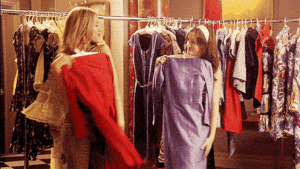Most people have a favorite color, but yours may not be the best for your wardrobe. They all have an exclusive group of colors that makes them look their best and another that puts them in their worst light. Coordinating the right colors makes all the difference between a wonderful style and an incredibly ugly one.
Establishing your color profile
Determine the sub-tones of your skin. You should stick to colors that match your skin’s undertones. Although there are very different skin tones, there are only two sub-tones: hot and cold. Warm skin has a slightly yellow or orange hue, while cold skin is more bluish or pale pink. There are two main ways to find out which one applies to you.
Vein test: observe the veins on your wrist or palm. People with warm undertones have greenish veins, but those with cold undertones have purple or bluish veins.
Jewelry test
Under natural lighting, wear a silver bracelet on one wrist and a golden bracelet on the other. Observe each one and notice which one best highlights your skin tone. If gold is your choice, the sub-tones are hot. If silver matches better, it indicates that the sub-tones are cold.
Learn to determine whether a color is hot or cold. The rule states that warm colors have a yellowish tint, while cold colors have a bluish tint. Understanding this dichotomy requires a lot of practice. A general list of hot and cold colors:
- Warm: reds, oranges, yellows and greenish yellows;
- Cold: green, blue and purple
Always keep your skin tone in mind.
In addition to paying attention to sub tones, the main tone can also determine which color palettes work best. A good rule of thumb is to note that those that create contrast with your skin in the light are the most appropriate. If your skin is dark, oranges and saturated yellows are almost always amazing, even if the undertones are cold.
Likewise, vivid colors normally found in jewelry, such as emerald, ruby and amethyst, are ideal for paler skins regardless of the undertones.
Use top pieces and scarves that highlight the color of your eyes. If you want to make your eyes brighter, it is important that a favorable color is close by. You should choose a color that matches directly with theirs or another that produces as much contrast as possible. Deep reds highlight the richness of brown eyes and serve as a beautiful complement to blue/green eyes.
Choosing neutral tones
Take six objects, each in a different neutral color. In this context, the six neutral tones are light and dark gray, light and dark brown, navy blue and black. [8] Grays and browns come in both hot and cold varieties, so choose the options that best match your skin palette. The object should be about the same length as your face and almost entirely monochromatic.
Observe your face close to each object. Do this in strong natural light with the aid of a hand mirror. Try to decide which color highlights your best features. The right color will make your eyes brighter and your skin healthier. Neutral tones that make your skin flushed or pale should be avoided. If you have difficulty making this choice, ask for help from a friendship that understands the subject.
Choose one or two neutral tones. These colors will be at the forefront of your wardrobes. Most pants, dresses, jackets and shoes should be among the neutral tones chosen. Avoid mixing neutral tones in a combination of pieces.
Coordinating the wardrobe
Choose a colorful outfit that matches the subtones. Take some of your favorite shades in the most appropriate color palette and make them the main theme. This part can be challenging, so test the mirror to make sure the colors look great on you. Theoretically, you can choose as many colors as you like.
However, the amount will be realistically limited due to budget, wardrobe size and the patience to make combinations. A good look is usually composed of a neutral tone and a main color, with a small amount of accent color. More than that simultaneously can make your appearance look excessive.
Choose some accessories to complement the style, in opposite tones to the accent color. Use them occasionally to highlight a set. An orange tie or handkerchief can bring out the highlight you are looking for when wearing a sober navy blue suit. Likewise, a water-green belt in a salmon dress can be unusual, but extremely stylish.
Stick to a type of metal for jewelry and accessories. Even if they make up only a part of the combination, the brightness of the metals quickly attracts the eye. Using them in two colors can cause conflict or appear excessive, especially if you are already wearing different shades. Silver and platinum are cold metals, while gold and bronze are hot metals.
Practice the combinations
A simple and fun way, if the wardrobe is limited, is to use collages and virtual murals. Swap each piece until you get the perfect look. Devise a few different combinations before you start shopping to get an idea of what to look for.
After evolving the wardrobe, you can make the real equivalent with the pieces you already have. If you are planning an important interview or a night out, it is best if the combination “works” in advance. Use all the pieces and accessories and see how everything harmonizes in front of the mirror. If the weather is right, use compatible clothing for added sophistication.
Tips
- Finding the right color palette can be difficult. If you’re not sure if a color is right for you, the best way to find out is to wear it.
- Make a note of the colors you are using when people give compliments. This can give you a good idea of which ones look best on you.
- Your best neutral tone is usually close to your natural hair color.
- Avoid clothes that are too close to your skin tone.
- If your outfit is monochromatic, try not to wear a scarf in the same color. Instead, choose complementary colors: if you are wearing a black dress with blue embroidery, for example, wear a teal scarf instead of black.
If you liked the tips, leave a comment! I’d love to hear from you!





Leave A Comment